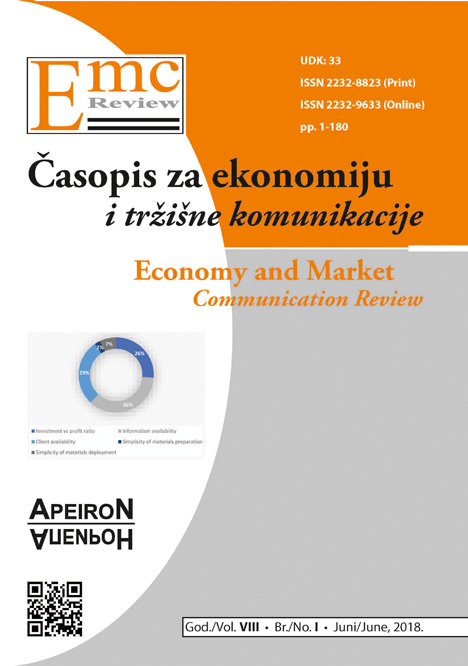MATRIC ASPECTS OF PREDICTIONS OF BUSINESS EFFICIENCY OF SMALL AND MEDIUM ENTERPRISES AS PRECONDITION OF INTERNATIONAL COMPETITIVENESS // MATRIČNI ASPEKTI PREDIKCIJE POSLOVNE EFIKASNOSTI MALIH I SREDNJIH PREDUZEĆA KAO PREDUSLOV MEĐUNARODNE KONKURENTNOSTI
DOI:
https://doi.org/10.7251/EMC1801108LAbstract
Entrepreneurial activity of transition countries, such as the RS and BiH, is filled with many threats from the environment, particularly concerning the lack of adequate entrepreneurial education, institutional support as well as the communication infrastructure between them and their significant financial impotence.The potential of SME entrepreneurship represents a significant precondition in the development of the national economy as well as the prerequisite of prevention and / or exit from the economic crisis, provided that their potential is exploited by a planned, not uncontrolled approach.
Maximizing of market potential and resource capabilities requires the establishment of an adequate decision-making system where problems are solved through planning, selection, application and measuring of the systemic environment from the aspect of significance, while at the same time, taking into account the internal potentialities.
Adequate communication between decision-makers with theoretical models and their effective implementation in business planning enables business systems and SME to achieve maximum business efficiency and effectiveness through the optimal combination of their own potential and business environment.
The theoretical model is a virtual tool which is used for symbolic - quantitative description of the real system, where the degree of conformity of the model and the reality which we described in it, is the determining factor in the success of real application of the modeled information.
The control problem is solved only by an adequate theoretical model that covers, selects, quantifies and functionally linked internal and external factors of “treated” reality. Functional linking of factors in the applied model must be adapted to decision-making conditions, which concerns the conditions of certainty, uncertainty or risk. The classification of decision makers should go into the direction of recognizing input, random and output variables as well as detecting the conditions and forms of their interdependence, adapted to decision-making conditions.
The business system is a goal-oriented system that requires optimization at several different levels to achieve system optimal as an adequate synergic suboptimal resultant.
The proposed approach is related to the stochastic optimization of the product portfolio harmonized with market potential, and after that the deterministic optimization of production processes in the function of achieving the optimal production portfolio.
The payment matrix as a virtual aid, or a brief summary of possible business results, allows the choice of optimal business strategy with maximum approval of model-based prediction and real business results.
